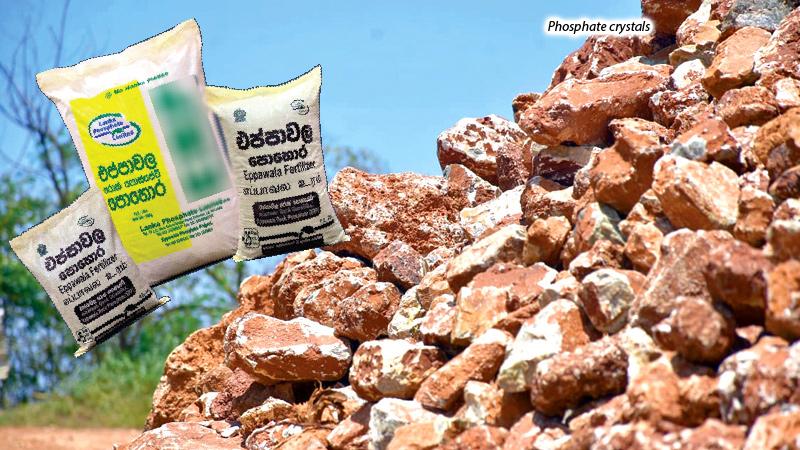
The ban imposed on import and use of chemical fertiliser and agro chemicals by the Government recently had grown into a controversial issue among farmers and ended amid the opposition and criticism of farmers, public organisations, the intelligentsia including the clergy.
 In 1950s parallel to the green revolution, the Agriculture Department introduced the application of chemical fertiliser. Not only the majority of farmers but also majority of agriculture and agrarian officials seem not well aware of the fact that the Agriculture Department simultaneously had recommended the application of organic or the carbonic fertiliser for a enhanced paddy harvest.
In 1950s parallel to the green revolution, the Agriculture Department introduced the application of chemical fertiliser. Not only the majority of farmers but also majority of agriculture and agrarian officials seem not well aware of the fact that the Agriculture Department simultaneously had recommended the application of organic or the carbonic fertiliser for a enhanced paddy harvest.
Eppawala Rock Phosphate, at this juncture comes in to the limelight making it a cynosure in the field of fertiliser issues.
Organic fertiliser initiative
Phosphate deposit in Eppawala a remote area in the Anuradhapura district about 220 km away from Colombo was discovered by the then Geological Surveys Department in 1971. The deposit covers 320 hectares. With the recent organic fertiliser initiative in the country, the possibility of using Eppawala Rock Phosphate (ERP) in soluble form to supplement the phosphorous component of NPK (Nitrogen, Phosphorous and Potassium) fertiliser has become a major topic among the eco-friendly fertiliser experts, users and officials in the agricultural development sphere.
In terms of chemistry, rock phosphate is not organic but a non- hazardous, human-friendly naturally occurred mineral used as the main phosphorous supplement in the fertiliser manufacturing industry. Since the ERP is not a man-made substance, it could be considered as an organic/carbonic substance by using fertiliser terminology. However, the Eppawala Phosphate deposit is supposed to be one of the best precious resources. Its value cannot be estimated as it is a non -renewable natural assets.
Phosphate and apatite deposits
 It has 60 million metric tons (mt) containing about 33-40 percent of phosphate. The deposit has got 60 million mt of phosphate (Northern area contains 40 million metric tons and 20 m metric tons in the southern area). It is classified as a high-grade deposit because it contains superior phosphate and one of the richest and unique apatite deposits in the world.
It has 60 million metric tons (mt) containing about 33-40 percent of phosphate. The deposit has got 60 million mt of phosphate (Northern area contains 40 million metric tons and 20 m metric tons in the southern area). It is classified as a high-grade deposit because it contains superior phosphate and one of the richest and unique apatite deposits in the world.
The deposit is exposed in the form of six hills rising to maximum elevation of about 200 metres from the mean sea level and covering a surface area of about 324 hectares. The Eppawala Phosphate Company has mining rights of 19 hectares. Before the discovery of the phosphate deposit, a large amount of Rock phosphate fertiliser was imported.
The production of phosphate fertiliser began in 1974. For the past 50 years, we have consumed about two million metric tons of phosphate or about three percent of the reserve. ERP fertiliser is used for plantation crops such as tea, rubber and coconut at the level of 45,000 mt only per annum. Phosphate consists of very little Arsenic percentage.
The Eppawala phosphate ore has got two components. They are greenish primary phosphate crystals and brownish colour aluminous - ferruginous - silceous secondary phosphate. Due to inclusion of aluminium, iron and silica, secondary phosphate has less water solubility.
The common variety is the secondary phosphate being marketed as Eppawala Rock Phosphate (ERP).
The other component that is primary crystal is marketed as high grade Rock Phosphate (HERP). Both categories of fertiliser are used for perennial crops including export cash crops and fruit crops. Out of this production, over 85 percent is used by around 12 private companies for re-mixing with Nitrogen, Potassium and other sources whereas the same process could be executed easily by the Lanka Phosphate Company. The Agriculture Ministry should look in to this lapse.
Increasing demand
 Tea plantations use 60 percent of the use of Eppawala phosphate whereas Rubber and coconut sectors share is 30 percent. The balance is used by export cash crops.
Tea plantations use 60 percent of the use of Eppawala phosphate whereas Rubber and coconut sectors share is 30 percent. The balance is used by export cash crops.
According to Eppawala Phosphate Company Chairman Sujeewa Indrajith Karunasinghe, with the organic fertiliser concept of the Government, the company has experienced an increase of Eppawala Rock Phosphate sales by 30 percent against the average monthly sales.
The phosphate mineral is highly insoluble. Due to this feature, it cannot be directly applied for crops like paddy and vegetables. The solubility of ERP needs to be increased to expand the sales into perennial crops sector.
Single Super Phosphate (SSP) as a substitute for imported expensive Triple Super Phosphate (TSP) is one such alternative product. Eppawala phosphate has to be treated with strong acids such as sulfuric to process more soluble SSP fertiliser. There have been many proposals and requests to the Government to take to manufacturing SSP. However, TSP and SSP are considered chemical fertiliser since these are man- made using chemicals with non-reversible environmental impacts.
Lanka Phosphate Limited is looking at all possibilities to expand its manufacturing capacity to meet the fertiliser requirement in line with Government policies for the benefit of the farmers and to ensure food security.
